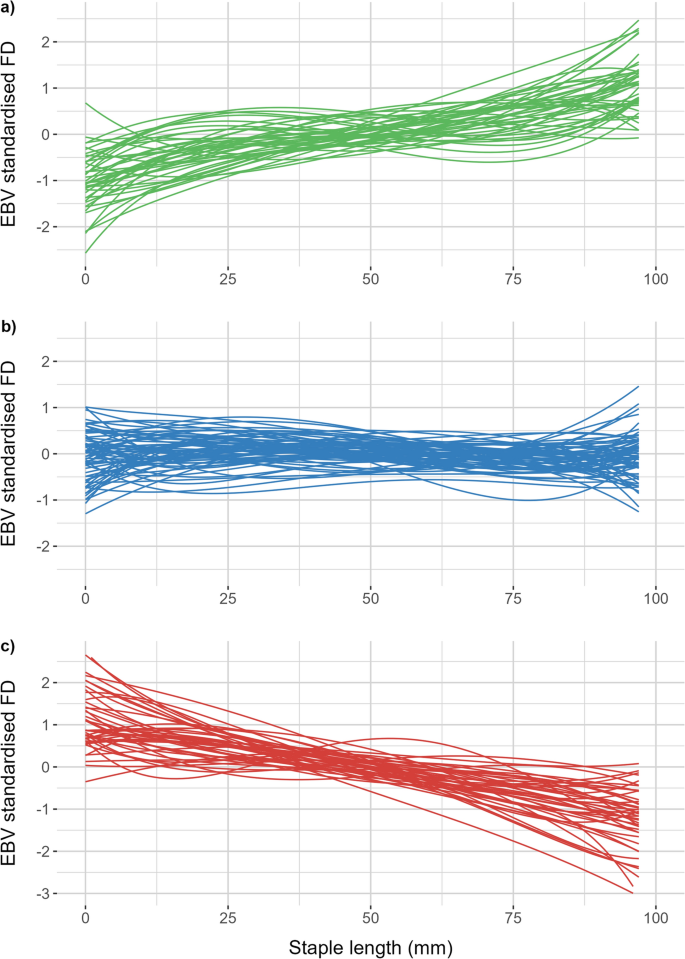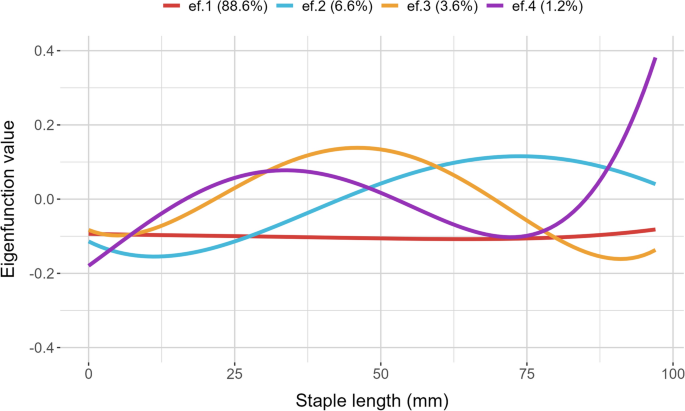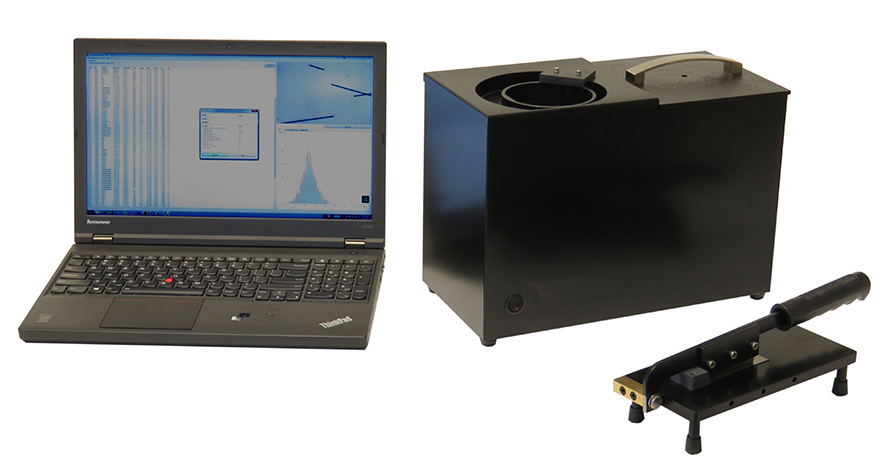The Role of an Optical Fibre Diameter Analyser in Product Inspection
The Role of an Optical Fibre Diameter Analyser in Product Inspection
Blog Article
Optimize Your Fibre Optic Efficiency: Understanding Optical Fibre Size Analyser Technology
The performance of fibre optic systems is critically influenced by the accuracy of their size, an aspect typically neglected in the quest of ideal signal integrity. Comprehending the modern technology behind optical fibre size analysers discloses the complex balance in between measurement precision and manufacturing top quality.
Relevance of Optical Fibre Size
The size of optical fibre plays a crucial function in establishing the performance and effectiveness of communication systems. Conversely, smaller sizes tend to sustain fewer modes, which can enhance signal clarity and reduce crosstalk.

In addition, comprehending the diameter's effects can cause cost savings by minimizing the need for signal boosting and repeaters in comprehensive networks (optical fibre diameter analyser). Finally, the importance of optical fiber diameter can not be overemphasized, as it directly impacts the overall efficiency and dependability of contemporary interaction systems

Exactly How Diameter Influences Signal Quality
Signal top quality in optical fibre systems hinges significantly on the size of the fiber. A smaller size can lead to higher depletion prices, resulting in signal loss as light trips through the fiber.
Conversely, bigger sizes normally permit improved light capture and reduced modal diffusion, enhancing signal quality. In multimode fibers, a bigger core size can support multiple light modes, yet it might also introduce intermodal diffusion, which can break down signal quality. Picking the optimal fiber diameter is crucial for achieving the desired efficiency in particular applications.
Furthermore, the communication between the fibre size and the wavelength of the light utilized plays an important function in establishing the effective transmission range and general signal integrity. Thus, recognizing exactly how fibre size impacts signal top quality is essential for network designers and designers making every effort to maximize optical fiber systems for reputable, high-speed information transmission.
Introduction of Size Analyser Technology
In lots of optical fiber production procedures, exact dimension of fibre size is essential for making sure consistent efficiency and high quality (optical fibre diameter analyser). Size analysers are sophisticated instruments developed to assess the physical dimensions of optical fibres with high precision. They employ sophisticated optical and laser innovations to measure the size, ovality, and concentricity of the fibre, therefore supplying essential information for high quality control
These analysers can operate in-line during the manufacturing procedure or as component of off-line screening procedures. In-line systems enable real-time surveillance, enabling producers to adjust specifications promptly, thus preserving optimal production conditions. Off-line analysers, on the various other hand, more helpful hints supply thorough evaluations of batches, guaranteeing that any type of inconsistencies from specified tolerances are determined and attended to.
Size analysers substantially add to the reduction of flaws in optical fibres, improving general product reliability. By consistently measuring key parameters, these modern technologies help with conformity with market standards and specs. As the demand for high-performance optical fibres remains to increase, the function of diameter analysers ends up being significantly vital in attaining the wanted top quality and performance standards in fiber optic systems.
Trick Functions of Fiber Diameter Analysers
Although different designs of fibre diameter analysers exist, they generally share several essential features that boost their performance and reliability. Among one of the most significant functions is high-resolution dimension capabilities, which ensure accurate size readings, essential for maintaining top quality control in fiber production. Furthermore, many analysers incorporate advanced optical sensing units designed to discover minute variants in fiber diameter, thus providing important information for procedure optimization.
One more vital function is real-time monitoring, permitting this article drivers to obtain prompt responses on fiber size throughout the manufacturing process (optical fibre diameter analyser). This capacity assists in quick modifications and lowers the likelihood of issues. Many analysers also come geared up with straightforward interfaces, making it possible for operators to quickly navigate with data and setups outputs
Moreover, robust information storage and analysis functionalities are important for tracking historical performance trends and guaranteeing conformity with market criteria. These features collectively add to the effectiveness of fiber diameter analysers in optimizing fibre optic efficiency.
Finest Practices for Fiber Optimization

First, normal calibration of optical fibre size analysers is vital. This ensures precise dimensions and reduces possible disparities that could impact efficiency. Next off, maintaining a clean working setting is vital; dust and pollutants can bring about signal deterioration.
In addition, it is essential to select fibres that satisfy details application demands. This entails evaluating aspects such as attenuation, transmission capacity, and environmental problems. Proper setup techniques must also be followed, including avoiding sharp bends and extreme stress, which can jeopardize fibre stability.
Additionally, employing sophisticated surveillance systems can help with real-time efficiency evaluations, enabling prompt identification of issues. Regular screening and upkeep need to be conducted to guarantee that fibres remain within optimal functional criteria.
Lastly, training personnel on the most recent fiber optimization innovations and techniques will certainly boost their capacity to apply reliable techniques. By complying with these best practices, organizations can substantially enhance the performance and lifespan of their optical fibre systems, ensuring reliable interaction and data transfer.
Conclusion
In conclusion, the integration of optical fibre diameter analyser technology is crucial for making best use of fiber optic performance. By guaranteeing exact dimensions of fibre measurements, these analysers substantially improve signal quality and lower losses during information transmission. Routine calibration and upkeep of the analysers are imperative to copyright optimal performance and conformity with industry criteria. Eventually, the application of this modern technology assists in improved data transmission prices and reinforces signal stability, adding to the general efficiency of fiber optic systems.
Signal top quality in optical fibre systems pivots dramatically on the diameter of the fiber.In numerous optical fiber manufacturing processes, precise measurement of fibre size is vital for making certain consistent performance and top quality. As the demand for high-performance optical fibers continues to climb, the duty of diameter analysers comes to be progressively essential in achieving the wanted quality and performance standards in fibre optic systems.
These functions collectively contribute to the efficiency of fiber size analysers in maximizing fiber optic performance.
In conclusion, the integration of optical fibre diameter analyser technology is essential for taking full advantage of fibre optic performance.
Report this page